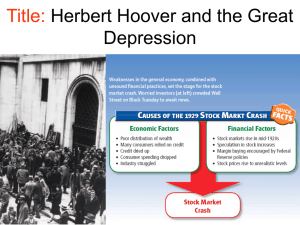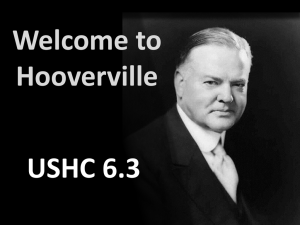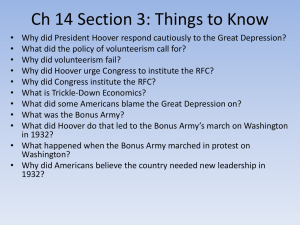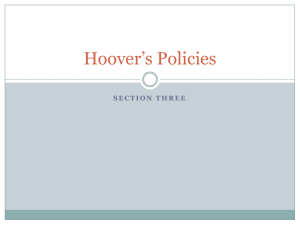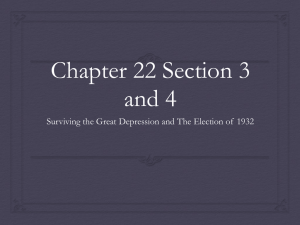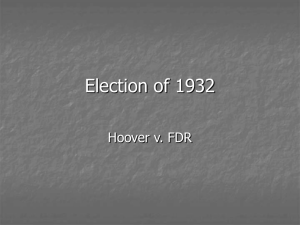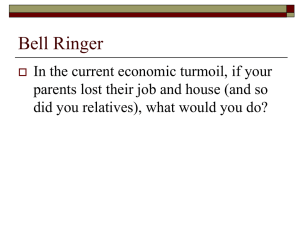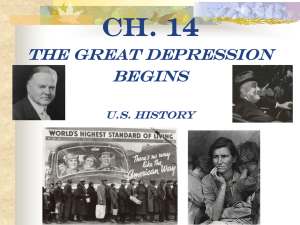File
advertisement
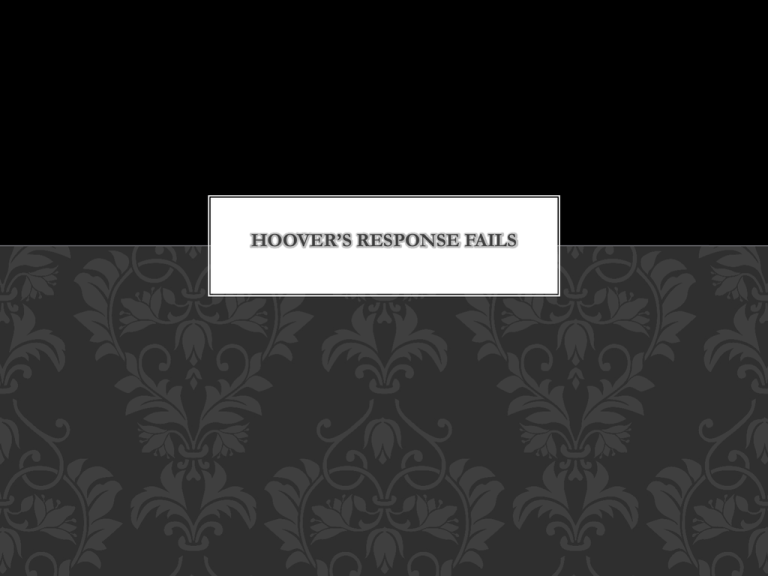
HOOVER’S RESPONSE FAILS OBJECTIVES •Discuss how Hoover’s initial conservative response to the depression failed. •Explain the changes in the President’s policies as the crisis continued. •Describe how Americans reacted to Hoover’s relief programs. VOCABULARY •localism – policy whereby problems are best solved at the state and local level and not by the federal government •trickle-down economics – economic theory that held that money lent to large banks and corporations would in turn be invested in small businesses which would hire more workers •Bonus Army – a march on Washington in 1932 in which World War I veterans seek bonus payment early Herbert Hoover did not cause the Great Depression, but Americans looked to him to solve the crisis. He tried a number of different approaches, but in the end he failed to discover the right formula for stopping the crisis. At the start of the economic downturn, Hoover took a hands-off approach. Like most economists of the day, he believed that up and down swings in the economy were a natural part of the business cycle. It was thought that strong businesses would weather storms without the support of the government. WHEN THAT FAILS, TRY SOMETHING NEW… Hoover saw that he must do something: Asked businesses to keep wages, employment, and prices at current levels Called for tax cuts, lower interest rates, and public works Asked wealthy to donate more money to charity But volunteerism failed: Hoover put his faith in localism, a policy whereby problems are best solved at the local and state levels. • Towns and states didn’t have the necessary resources to deal with the depression. • Hoover did not support direct federal aid to individuals. NOW WHAT? In 1932, Hoover urged Congress to create the Reconstruction Finance Corporation (RFC). The RFC employed a policy known as trickle down economics. TRICKLE DOWN ECONOMICS Government Banks Business Banks Business The American People Business THE CYCLE STALLS The RFC gave billions of dollars to banks and large businesses. The idea was that they would lend to, and invest in, struggling businesses who would hire workers and thus end the depression. The RFC failed when businesses did not hire more workers. AMERICANS GROW TIRED OF IT Many grew disillusioned during the Great Depression. • Some blamed Hoover and some blamed capitalism. • Some were World War I veterans who wanted a bonus that was promised to them. • In 1932, those veterans formed the Bonus Army and marched on Washington. THE BONUS ARMY GOES TO WASHINGTON 20,000 veterans set up camps and occupied vacant buildings. In July, police tried to evict them and riots erupted. Hoover ordered General Douglas MacArthur to remove the veterans. He used tear gas, cavalry, tanks, and troops with fixed bayonets. The eviction of the Bonus Army doomed Hoover’s bid for reelection.

